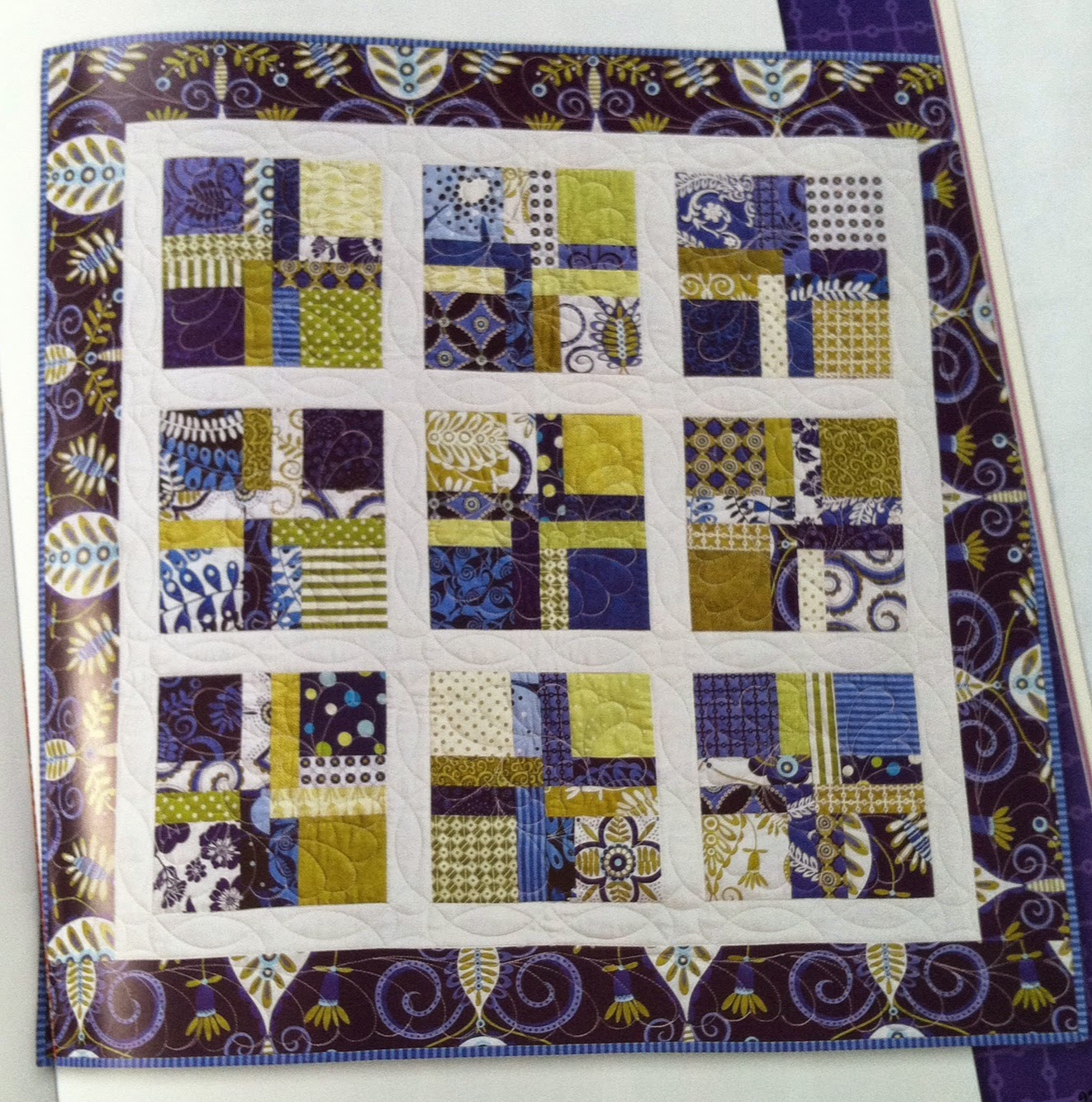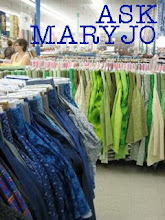Friday, May 30, 2014
Wednesday, May 28, 2014
7 Steps To Dress Your Window Like a Pro
Dress Your Window with Elegant Silk Curtains
Are you looking for an elegant style of curtains that you can make yourself,
for a special window in your home? This
beautiful curtain features a smocked top heading, created with fabric, lining
and gathering tape available in the home décor area at Mary Jo’s Cloth
Store. A purple silk fabric worked up
beautifully for this style with hand stitched glass beads for even more glamour!
Gathering tapes are a great way to create curtains or valances. To use shirring tapes, finish your curtain or
valance allowing for a double fold of material on the reverse side at the top. For silk or other thin fabrics, be sure to
add lining material for added body. You
will need 2 ½ to 3 times fullness across the width of the flat, finished
curtain.
After the curtain panel is finished, pin the shirring tape on the
reverse side, and machine stitch using a thread that matches the face fabric. You can drop the tape down from the top to
create a ruffle like shown, or line it up even along the top.
Sew the tape to the curtain using a matching thread. Depending on the tape you are using, you will
need to stitch two or more times across the top. Be careful not to stitch across the gathering
cords that are woven into the tape!
After it is sewn, fish out the shirring cords on one end and tie
securely. On the opposite side, fish out
the cords, tie and pull to gather the curtain to the desired fullness.
The specific tape used on this curtain gives a diamond-smocking
appearance.
To enhance the appearance of the smocking, it may need to be
hand-stitched at the top, bottom and center of the gathers. On this curtain, small glass beads were added
to accent the stitching.
To install the curtain on the hardware, insert pin hooks by stabbing
them into the back of the gathering tape, spaced about 4 inches apart. You will find the pin hooks and a wide
assortment of high quality drapery poles, finials and
brackets in the drapery hardware area at Mary Jo’s.
Friday, May 23, 2014
Monday, May 19, 2014
When Bad Things Happen to Good Quilts: How to Fix Mistakes and Mishaps
The dog ate my
handiwork…
The family dog found this quilt too hard to resist and chewed a hole
into the edge. Bad dog! We consulted with Aimee Griffin, owner of Overall Quilter and Sewing
Director at Mary Jo’s Cloth Store for advice on how to fix this, and other
quilt mistakes and mishaps.
For this quilt, Aimee suggested downsizing and adding new binding. By doing this, the border will be consistent
around the entire piece and the slightly smaller size will not be noticeable.
First step to repairing this quilt was to cut away enough from the edge
to remove the bad area. Aimee is using a
rotary cutter and mat with a clear quilters ruler to make accurate cuts. After the edges are cut away, new binding can
be applied and it’s as good as new!
Oops! Spills and stains…
Before
cleaning you should always spot-check on remnant fabric, or on a small corner
of the quilt to make sure the materials are colorfast. For small spills and stains try spot cleaning
with a mild soap and water, using a cloth or soft toothbrush to work the stain
out of the fabric and air-dry flat. If
the entire quilt needs to be washed, use a fabric friendly detergent like Forever New, which is mild cleaning
solution, free of bleach and petroleum products and rinses clear without any
soap residue.
To machine wash, use a front load
washing machine set on the delicate cycle and air dry or tossed in a delicate,
low heat dryer. Machine finished quilts are obviously sturdier and take
machine-washing well. Hand quilted
quilts can also be gently washed, but may require repairs to the hand stitching
after multiple washings.
That doesn’t look
right….
It is a proud moment when you finally finish a new quilt! You can’t wait to show it off to your friends
and family but while admiring your creativity and hard work there it is, in the
beauty of the blocks and stitches you see it for the first time – a
mistake! How did that happen?
Did you spot it? One block of four squares a quarter turn the wrong
way. Don’t despair! Aimee has a great
method for fixing this type of mistake without taking apart the finished quilt.
Begin by sewing together a new block out of remnant fabrics. All you need is that one small section of
four squares.
Aimee suggests using Wonder Tape with an iron, and a Press Perfect
stiletto to carefully set the new square in place, covering the mistake.
The seam allowances are pressed under using Wonder Tape to hold the edges down.
More Wonder Tape is used to temporarily secure the new quilt block over the mistake with an iron. Use the stiletto to hold the fabric in place, keeping your fingers away from the hot iron.
Aimee is excited to show off the repair!
The new block can be stitched in place, and only you will ever know the
mistake was ever there!
Labels:
DIY,
Gastonia,
Mary Jo's Cloth Store,
mistake,
Quilt Cleaning,
Quilts,
Sewing,
Stain,
washing
Thursday, May 15, 2014
Sew Your Own Grommet Curtains
If you would like to try sewing curtains, but lack the
confidence to tackle a complex project, grommet curtains are a great place to
start! They require less fabric than
pleated styles and are simple to make. Plus grommets are a hot trend; used in
purses, tote bags, garments and home décor. Grommets are everywhere!
Here are a few tips before you get started:
- Select a rod that is a smaller diameter than the grommets, so the curtain will slide easily.
- Install the rod above the window first, so you can measure the finished width and length for your curtains. Remember the top of the rod is where the top of the inside of the grommet will be – the curtain fabric will be above the rod. If you are unsure of the correct length, install the rod and make the curtains but leave the bottom hem unfinished. Hang the curtain on the rod to mark the length, then remove and finish the hem.
- Always plan for an even number of grommets so the curtain will begin and end facing the wall.
- Space the grommets around 6 to 7 inches apart on center. If you space them too far apart the curtain will hit the wall when it folds back behind the rod.
- If you want to open and close your grommet curtains, allow for at least one and a half times fullness across the width of your rod.
- Allow 16 inches of extra fabric for top and bottom hems.
Purchase everything you need to make grommet curtains at
Mary Jo’s Cloth Store:
Home décor fabric
Lining fabric
Plastic snap-together grommets
Fabric glue (choose a glue that dries clear)
Basic sewing tools and supplies
Making the curtain panel:
- Cut fabric allowing for top and bottom hems. With the fabric face down on your work surface, fold and iron a 4 inch doubled hem (allow 8 inches total) at the top and bottom of the curtain material, measuring for the correct length. Fold and iron a 1 ½-inch doubled hem down each side (allow 3 inches total). To add lining to your curtain, cut lining fabric allowing 6 inches for the hem and fold a 3 inch doubled hem in the bottom and iron. Machine stitch the hem. With the curtain face down, place the hemmed lining face up and inset 1 inch from the bottom edge. Trim the lining to fit the curtain panel, tuck the edges under the side and top hems and pin. (The bottom of the curtain and lining will be free hanging). Sew all the hems by hand or machine stitching, or you can wait until after the grommets are set in the top to sew the hems.
Adding grommets to the curtain:
- To plan the grommet spacing, measure and mark 1 ½-inches from each end on the backside of the top curtain hem. This will be the center of each end grommet.
- Measure in-between the marks, and divide by an odd number (so that you will have an even amount of grommets). For this curtain, the measurement between the marks is 40 ½ inches, divided by seven for eight grommets spaced at 5.785 inches apart.
- Mark for each grommet in the center of the top hem.
- Pry apart each grommet using a small, flat head screwdriver and use one side of the grommet to draw a circle at each mark.
- Cut out each circle slightly larger than the line that was drawn – this will keep the fabric from being too tight around the neck of the grommet.
- To set the grommets, add a little glue around the inside of the grommet front piece (the front of the grommet is the piece with the longer neck) and place it into the cut circle so the neck of the grommet is coming through to the back side. Add a little glue to the back piece and snap the front to the back.
- Once all the grommets are
set, the curtain is ready to hang at the window.
Labels:
curtains,
decor,
DIY,
Do it yourself,
Fabric,
Grommet,
Home Dec,
Home Decor,
Sewing
Subscribe to:
Posts (Atom)

























































